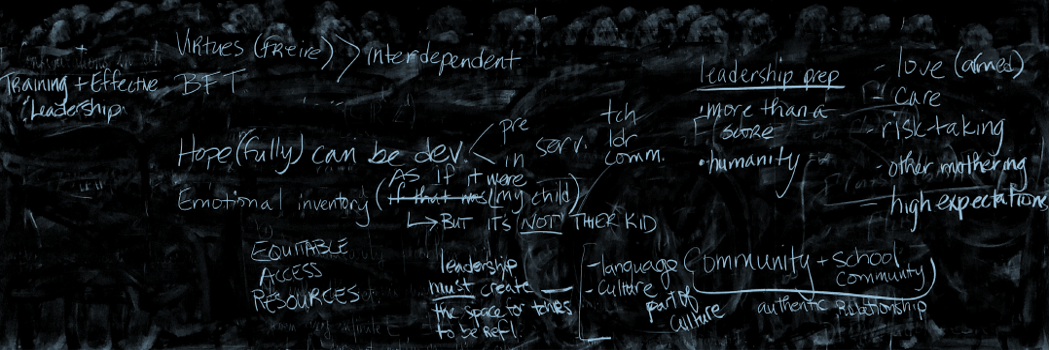Remind me why do we want (cultural) capital, again? As I read both Yosso (2005) and Rodela & Rodriguez-Mojica (2019) I keep thinking about Audre Lorde’s words: “the master’s tools will never dismantle the master’s house”. She also talks about how doing so only narrows the parameters of change that are possible and allowable and does not enable genuine change. The concern I have in reading this weeks’ texts is the danger of language and how powerful language can be through discourse in the use and implications of words for the realities of people. There are limits that are placed by using the framework of capitalism to discuss something inherently anti-capitalistic– community and indigenous cultural knowledges. The semantics of framing “Outsider”, mestiza, an transgressive knowledges as (cultural) “capital” is dangerous. As capital in a system of capitalism is capitalized—and that is exactly what is happening and what ends up happening from using a framework of oppression to make sense of indigenous knowledges, that persist in opposition to intersectional, colonial oppressions. August, I hear you– to then go on and discuss SIX forms of capital and call it community cultural “wealth” (again a capitalistic term) is entirely counter intuitive. I am new to this theory but have often heard “cultural capital” thrown around by educators as a justification for why ELL, predominantly non-white immigrant students from primarily working class families struggle in public school. And ultimately is used to promote assimilationist pedagogies and goals for those who do not fit the white-middle to upper class-english speaking-american student typology. At the same time, my concerns may be reduced to a disdain to semantics (although I see it as much more nuanced than simply semantics). I do want to recognize the insight that Yosso (2005) and Rodela & Rodriguez (2010) (through counternarratives) provide. Maintaining hope and dreams (aspirational), strengths as a multilingual (Linguistic) , cultural knowledge that hold communal history, memory, and intuition (familial), strength in relationships (social), navigating spaces with resilience (navigational), and inherent resistance towards oppressions (resistant) among communities of color all still contribute to how we are theorizing about radical care. Radical care draws on these six areas that Yosso (2005) identifies and Rodela & Rodriguez (2019) extend in the counterstories of Latinx School Administrators, however to view them as “capital” and not integral components to the critical, radical care we imagine defeats the purpose. I am sure there are people out there in the world talking about what I am trying to say here much more articulately but I hope you get what I’m tryna say.
Radical Care Sp21
Teaching & Leading for Justice in Schools




lol @ this title.
I appreciate your referencing the masters’ tools here. I definitely agree with that comparison. And I had similar feelings about wondering if I was getting caught up in semantics in my criticism. But I feel that it goes beyond semantics. This community cultural wealth framework seems to still view students of color as only valuable as members of the workforce. It’s a more holistic understanding of being a student, but still assumes that people must have “value”.
I would like to see a counter to cultural capital that proclaims that even if a student of color is totally useless, unproductive, just a total mess of a human being, they still deserve to be treated with respect. Even without any value at all, students should be treated well. What of the students of color who are not multilingual, who do not aspire to be anything great, who are super anxious so they are bad at navigating systems and utilizing social networks?? For the sake of this example, they have no capital at all. They are still deserving of justice, comfort, respect, etc.
Ya know?